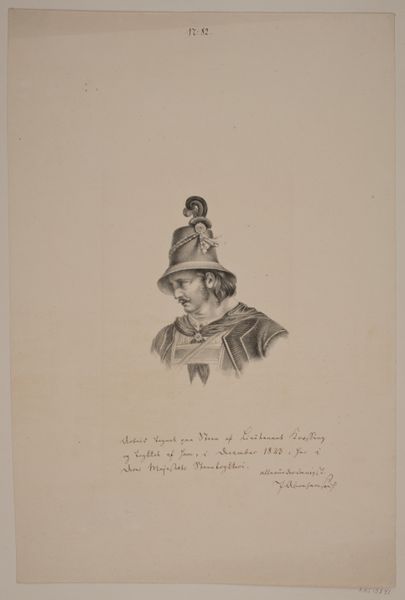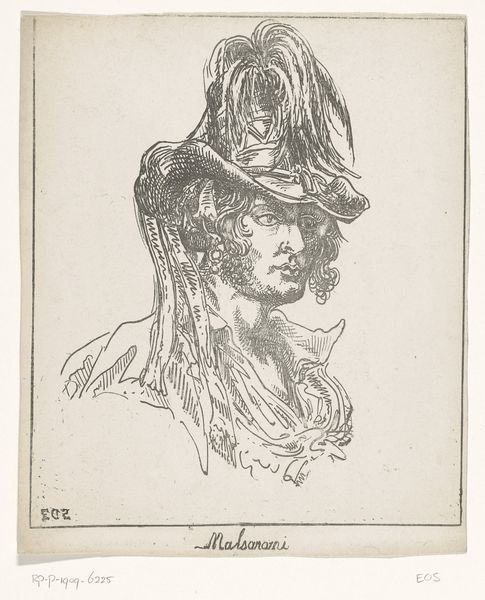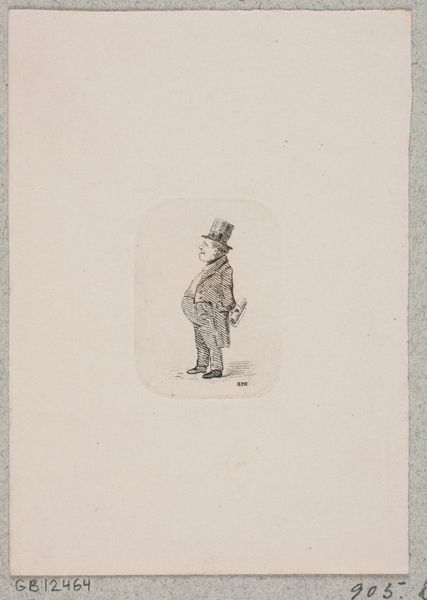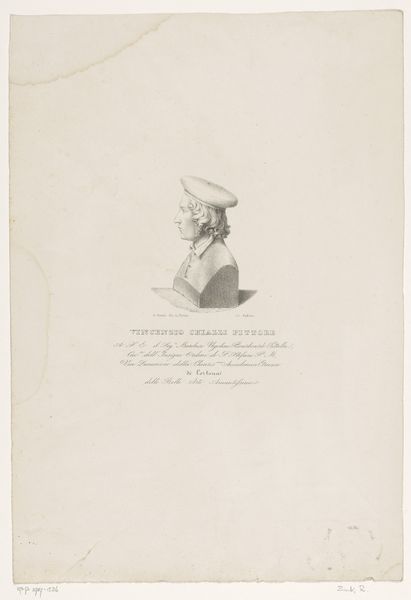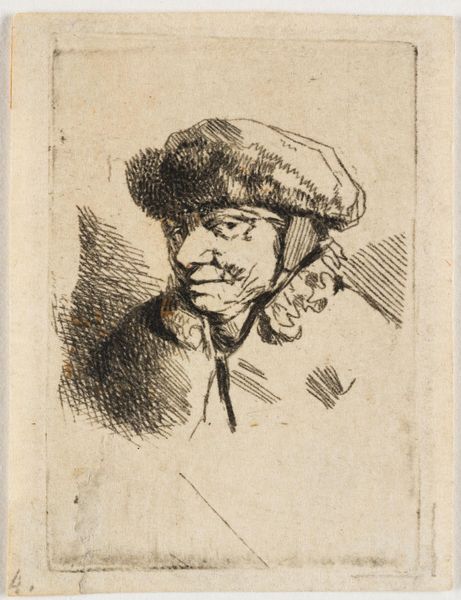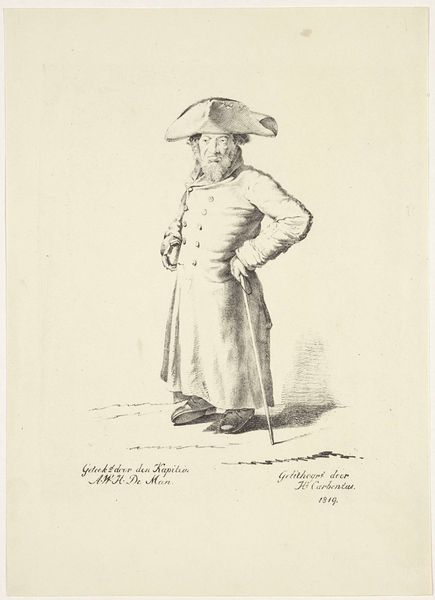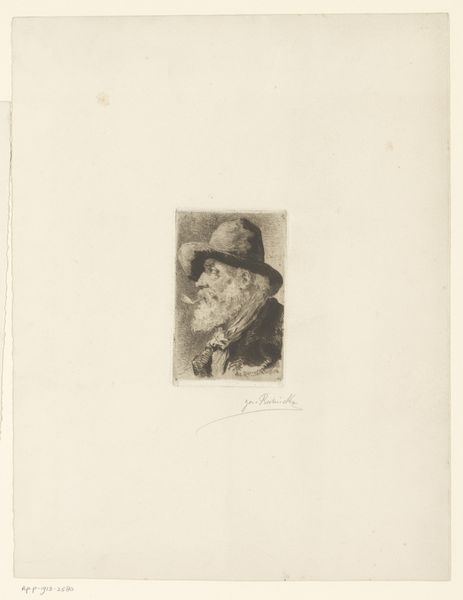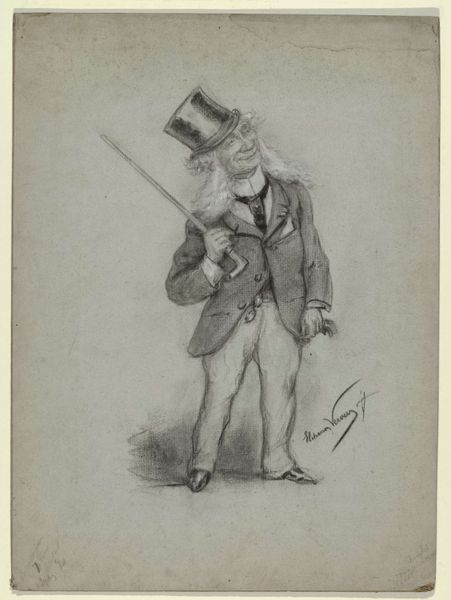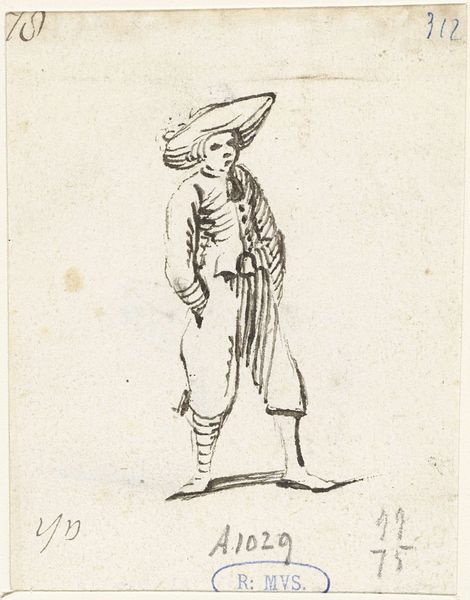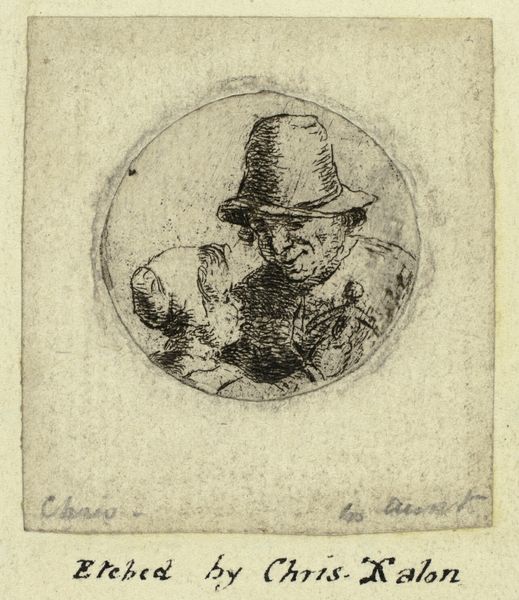
drawing, print, ink
#
portrait
#
drawing
#
ink drawing
# print
#
caricature
#
ink
#
realism
Dimensions: 6 15/16 x 4 1/2 in. (17.6 x 11.4 cm)
Copyright: Public Domain
Editor: So this is Jules Worms’ “Caricatured Head of a Spaniard,” created around 1880. It’s an ink drawing and…it’s pretty funny. It's mounted on what looks like a spool, with a witty, satirical feel. What can you tell me about its context? Curator: Well, considering its historical context, it’s interesting to think about the public role of caricature in the late 19th century. Caricatures like these weren’t just innocent jokes; they were often loaded with political and social commentary. Think about the socio-political climate – what could be the purpose of exaggerating the features of a Spaniard in 1880? Was there a specific political tension that Worms might be commenting on? Editor: I hadn't considered it as political commentary. So it wasn't just about making people laugh? It served a larger social function? Curator: Exactly. The political use of imagery was very common at that time. Consider how mass media was evolving and becoming increasingly influential. Artworks, particularly prints and drawings reproduced in newspapers and magazines, were vital for shaping public opinion. How do you think access to art through such outlets affected Worms' artistic choices? Editor: I guess, thinking about it, he’d be trying to create something instantly recognizable and memorable, playing into existing stereotypes, perhaps. Making a sharp political statement easily consumable for a wide audience. Curator: Precisely. The artist's hand is guiding, shaping, and arguably, exploiting existing public perceptions. These pieces gain meaning as elements of a cultural dialogue, so understanding their creation also means analyzing that broader public conversation of the era. Editor: So much to unpack from a simple drawing! I see how critical and even controversial it is to interpret artwork using historical context, in its place and time. Curator: And hopefully that approach reveals how the smallest drawing is woven into complex societal structures!
Comments
No comments
Be the first to comment and join the conversation on the ultimate creative platform.
